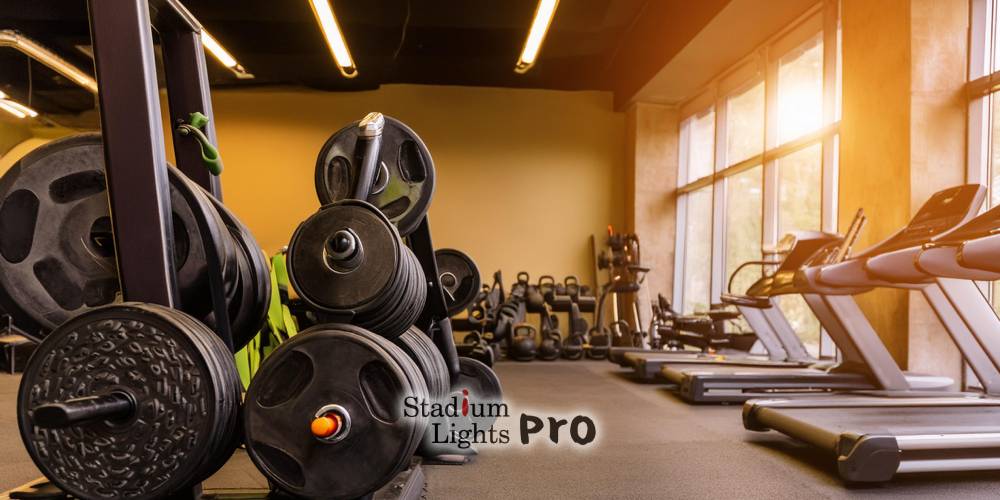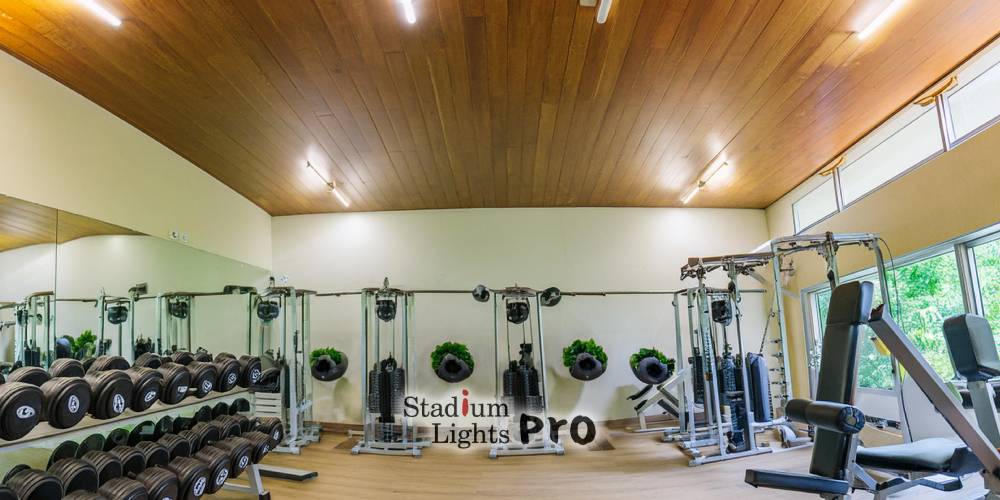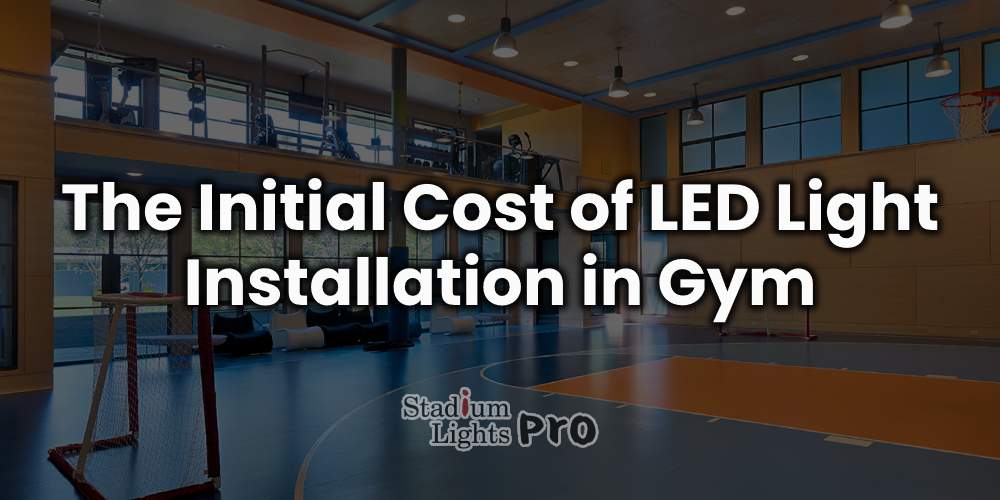In gym environments, LED lighting has emerged as a preferred option due to its numerous benefits such as energy efficiency, longevity, and superior illumination quality. The transition to LED lighting represents a significant investment for gym owners, necessitating a comprehensive understanding of the initial costs involved. By grasping the scope of expenses associated with LED light installation, gym owners can make informed decisions regarding budget allocation, long-term savings, and overall operational efficiency. Therefore, appreciating the importance of understanding these initial costs is paramount in ensuring a successful and sustainable transition to LED lighting within gym facilities.

Table of Contents
ToggleFactors Influencing Initial Costs
Types of LED lights suitable for gyms
LED lights suitable for gyms encompass panel lights, tube lights, high bay lights, and flood lights, each serving specific lighting needs within the fitness environment. Panel lights offer uniform illumination across large gym spaces with a sleek design, while tube lights provide flicker-free lighting and consistent brightness in corridors and workout zones. High bay lights are designed for high-ceilinged areas, delivering powerful light output for optimal visibility during activities like basketball or weightlifting. Flood lights are utilized outdoors for illuminating entrances and parking lots, featuring weatherproof construction and broad-area coverage. These LED fixtures collectively offer energy efficiency, durability, and tailored performance to meet the diverse lighting requirements of gym facilities, ensuring a well-lit and conducive environment for fitness activities.
Size and layout of the gym space
The size and layout of the gym space play a crucial role in determining the type and placement of LED lighting fixtures. Larger gym spaces may require high-output fixtures such as high bay lights to ensure uniform illumination, while smaller areas like corridors or offices may benefit from more compact options like panel lights or tube lights. Additionally, the layout of the gym, including the arrangement of workout equipment, partitions, and structural features, influences lighting design decisions to minimize shadows and ensure adequate coverage. Proper consideration of the size and layout of the gym space allows for strategic placement of LED lights to optimize visibility, enhance aesthetics, and create a comfortable and safe environment for gym-goers.
Energy efficiency ratings
Energy efficiency ratings are essential considerations when selecting LED lighting for gyms, impacting both operational costs and environmental sustainability. LED fixtures with high energy efficiency ratings consume less electricity while producing the same or greater illumination compared to traditional lighting sources. This translates to significant savings on utility bills over time, particularly in facilities where lighting operates for extended hours. Energy-efficient LED lights also contribute to reducing carbon emissions and environmental impact, aligning with sustainable practices increasingly valued by gym owners and patrons alike. By prioritizing fixtures with superior energy efficiency ratings, gyms can minimize operating expenses, enhance environmental stewardship, and create a more sustainable fitness environment.
Installation requirements and labor costs
Installation requirements and labor costs are key factors to consider when implementing LED lighting in gyms. The complexity of installation varies depending on the type of fixtures selected, the existing electrical infrastructure, and any additional modifications needed. High bay lights or panel lights may require professional installation due to their elevated mounting locations or intricate wiring setups, whereas tube lights or flood lights may be more straightforward to install. Labor costs encompass the fees associated with hiring qualified electricians or contractors to handle the installation process, including tasks such as wiring, mounting, and testing. It’s essential to budget for installation expenses alongside the purchase of LED fixtures to ensure a seamless transition to energy-efficient lighting in the gym, minimizing downtime and maximizing cost-effectiveness in the long run.
| Item Name | Description | Illumination Area (approx.) | Price Range (USD) |
|---|---|---|---|
| LED Panel Lights | Ultra-thin LED panel lights designed for energy-efficient illumination in large gym spaces. Features a sleek design and a size of 600x600mm, providing uniform and glare-free lighting. Suitable for drop ceilings. | 10-15 sqm | $80 – $130 |
| LED Tube Lights | Long-lasting LED tube lights perfect for corridors and workout areas in gyms. These flicker-free lights offer consistent brightness and come in a standard length of 1200mm. Ideal for retrofitting existing fluorescent fixtures. | 4-6 sqm | $15 – $30 |
| LED High Bays | Powerful LED high bay lights designed to illuminate high ceilings in gymnasiums. With a wattage of 150W, these fixtures offer broad-area coverage and superior light output. Features include adjustable mounting options and a durable housing for long-term reliability. | 20-30 sqm | $120 – $180 |
| LED Flood Lights | Outdoor LED flood lights engineered for illuminating gym entrances and outdoor areas. With a wattage of 50W, these lights provide ample brightness and come with a weatherproof design for durability in outdoor environments. Features adjustable brackets for flexible installation. | 10-15 sqm | $60 – $85 |
| Total | $275 – $425 |
Calculating Initial Costs
Cost per unit for LED lights
The cost per unit for LED lights is a fundamental consideration when planning the budget for gym lighting upgrades or installations. This metric refers to the price of individual LED fixtures, typically expressed in currency per unit (e.g., per light bulb, per panel, per floodlight). The cost per unit varies based on factors such as the type of LED fixture, its specifications (e.g., wattage, lumens), brand reputation, and any additional features or certifications (e.g., Energy Star rating). By assessing the cost per unit for LED lights, gym owners can make informed purchasing decisions that align with their budgetary constraints while ensuring high-quality, energy-efficient lighting solutions for their facilities.
Bulk purchase discounts
Bulk purchase discounts are incentives offered by suppliers or manufacturers to encourage the procurement of LED lighting fixtures in large quantities. These discounts typically provide cost savings to buyers based on the volume of units purchased. Gym owners or facility managers can take advantage of bulk purchase discounts when acquiring multiple LED lights for lighting upgrades, renovations, or new construction projects. The discounted pricing structure may vary depending on the supplier and the quantity ordered, with higher discounts often available for larger volume purchases. By leveraging bulk purchase discounts, gym owners can reduce the overall cost per unit of LED lights, making the transition to energy-efficient lighting more cost-effective and financially advantageous for their establishments.
Additional equipment or materials needed for installation
In addition to LED lighting fixtures, gym owners may need to budget for additional equipment or materials required for the installation process. These can include items such as mounting hardware, electrical wiring, junction boxes, conduit, and connectors. Depending on the specific requirements of the installation, other materials like mounting brackets, screws, and anchors may also be necessary. In addition, if any modifications to the existing electrical infrastructure are needed to accommodate the new LED lights, such as upgrading circuits or adding dimmer switches, the cost of these materials should also be factored into the budget. By accounting for these additional equipment and materials, gym owners can ensure a smooth and successful LED lighting installation process, minimizing unexpected expenses and delays.
Potential government incentives or rebates
Potential government incentives or rebates are financial incentives offered by governmental agencies to encourage the adoption of energy-efficient technologies, including LED lighting, in commercial establishments such as gyms. These incentives may come in the form of tax credits, grants, rebates, or other financial incentives designed to offset the upfront cost of purchasing and installing energy-efficient lighting fixtures. Eligibility for these incentives often depends on factors such as the type of LED lighting installed, its energy efficiency rating, and compliance with specific energy-saving standards or programs. By taking advantage of government incentives or rebates, gym owners can reduce the overall cost of transitioning to LED lighting, making it a more affordable and financially viable option for their facilities.

Considerations for Ongoing Maintenance
Longevity and warranty coverage of LED lights
The longevity and warranty coverage of LED lights are essential factors to consider when investing in lighting solutions for gyms. LED lights are renowned for their extended lifespan compared to traditional lighting technologies, with many fixtures capable of lasting tens of thousands of hours before needing replacement. Besides, reputable manufacturers often offer warranty coverage for their LED products, providing protection against defects in materials or workmanship for a specified period. Warranty coverage can vary depending on the manufacturer and the specific product, with typical warranties ranging from one to ten years. By selecting LED lights with robust longevity and comprehensive warranty coverage, gym owners can ensure reliable performance, minimize maintenance costs, and have peace of mind knowing their lighting investment is protected.
Expected lifespan and replacement costs
The expected lifespan and replacement costs are crucial considerations when evaluating LED lighting for gyms. LED lights are renowned for their long lifespan, often lasting tens of thousands of hours before needing replacement. This longevity translates to reduced maintenance and replacement costs over time compared to traditional lighting technologies. However, it’s essential to factor in the eventual replacement of LED lights into the overall cost analysis. While LED fixtures typically have a significantly longer lifespan than conventional lights, they will eventually degrade over time and require replacement. Gym owners should consider the expected lifespan of LED lights when budgeting for future replacements and maintenance expenses to ensure the continued operation and efficiency of their lighting systems. By proactively planning for replacement costs, gym owners can avoid unexpected expenses and ensure uninterrupted lighting performance in their facilities.
Routine maintenance requirements
Routine maintenance requirements for LED lighting in gyms are generally minimal compared to traditional lighting technologies. LED lights are known for their durability and reliability, requiring less frequent maintenance and replacement. However, regular cleaning and inspection of LED fixtures are still recommended to ensure optimal performance and longevity. Maintenance tasks may include dusting or wiping the fixtures to remove dirt and debris, checking for any signs of damage or wear, and ensuring proper alignment and functioning of the lights. Additionally, periodic checks of electrical connections and wiring can help identify any potential issues before they escalate. By adhering to routine maintenance practices, gym owners can prolong the lifespan of their LED lighting systems, minimize the risk of malfunctions or downtime, and maintain consistent lighting quality throughout their facilities.
Impact on overall cost-effectiveness
The impact on overall cost-effectiveness is a critical aspect to consider when evaluating LED lighting for gyms. While LED fixtures may have a higher upfront cost compared to traditional lighting options, their long-term cost savings and benefits often outweigh the initial investment. LED lights are significantly more energy-efficient, consuming less electricity and leading to lower utility bills over time. Moreover, their extended lifespan and reduced maintenance requirements result in fewer replacement and maintenance expenses, further contributing to cost savings. Moreover, potential government incentives or rebates can help offset the initial investment, making LED lighting even more cost-effective for gym owners. Furthermore, the improved energy efficiency and performance of LED lights can enhance the overall value proposition of a gym by creating a better-lit, more comfortable environment for patrons, potentially attracting more customers and boosting revenue. Overall, while LED lighting may require a higher initial investment, its long-term cost-effectiveness and benefits make it a smart and sustainable choice for gym facilities.
Comparison with Traditional Lighting Options
Cost analysis over a specified period
Cost analysis over a specified period involves evaluating the total cost of ownership of LED lighting for gyms, including both upfront expenses and ongoing operational costs, over a predetermined timeframe. This analysis considers factors such as the initial investment in LED fixtures, installation costs, energy consumption, maintenance expenses, and any potential savings or incentives over the specified period, typically ranging from several years to the expected lifespan of the LED lights. By comparing the total cost of ownership of LED lighting with that of traditional lighting options over the same period, gym owners can assess the long-term financial implications and benefits of transitioning to LED technology. This comprehensive analysis enables informed decision-making, helping gym owners determine the most cost-effective and sustainable lighting solution for their facilities.
Energy savings and efficiency comparisons
Energy savings and efficiency comparisons are crucial aspects when evaluating LED lighting for gyms. LED lights are known for their superior energy efficiency compared to traditional lighting technologies such as incandescent or fluorescent bulbs. LED fixtures consume significantly less electricity while providing the same or better illumination, resulting in substantial energy savings over time. Efficiency comparisons typically involve assessing metrics such as lumens per watt (lm/W) or energy consumption (in watts) to achieve a certain level of brightness. LED lights often outperform traditional options in these metrics, offering higher efficacy and lower energy usage for equivalent or better lighting quality. By switching to LED lighting, gyms can reduce their energy consumption, lower utility bills, and minimize their environmental footprint while maintaining high-quality illumination for their patrons.
Environmental considerations
Environmental considerations are essential when selecting LED lighting for gyms. LED lights offer several environmental benefits compared to traditional lighting options. They consume significantly less energy, resulting in lower greenhouse gas emissions and reduced reliance on fossil fuels for electricity generation. Additionally, LED fixtures contain no hazardous materials such as mercury, making them safer to use and dispose of at the end of their lifespan. LED lights also have a longer lifespan and require fewer replacements, reducing waste and the environmental impact associated with manufacturing and disposal. Furthermore, by choosing LED lighting with high energy efficiency ratings and certifications such as Energy Star, gym owners can demonstrate their commitment to sustainability and environmental responsibility. Overall, LED lighting is a environmentally friendly choice that helps gyms minimize their carbon footprint and contribute to a cleaner, greener future.
Unique Benefits of LED Lights for Gym Environments
Enhanced lighting quality and performance
Enhanced lighting quality and performance” refers to the superior illumination provided by LED lighting compared to traditional lighting technologies. LED lights offer several advantages, including brighter and more uniform light distribution, improved color rendering, and reduced glare. These features contribute to a more visually appealing and comfortable environment for gym users, enhancing their overall experience. LED fixtures also offer dimming capabilities and color temperature control, allowing gym owners to customize the lighting to suit different activities and preferences. Furthermore, LED lights have instant-on functionality, eliminating the need for warm-up time and providing immediate illumination when switched on. Overall, the enhanced lighting quality and performance of LED lighting contribute to a safer, more productive, and enjoyable workout environment in gyms.
Customization options for different gym areas
Customization options for different gym areas” refers to the versatility of LED lighting fixtures to adapt to various spaces within a gym facility. LED lights offer flexibility in terms of brightness levels, color temperatures, and beam angles, allowing gym owners to tailor the lighting to suit the specific needs and activities of different areas. For example, brighter and cooler-toned lighting may be preferred in high-traffic workout zones to promote alertness and focus, while softer and warmer lighting may be more suitable for relaxation areas or yoga studios to create a calming atmosphere. Furthermore, LED fixtures come in a variety of shapes, sizes, and mounting options, enabling gym owners to optimize lighting layouts for maximum efficiency and effectiveness. By leveraging customization options, gym owners can create a dynamic and engaging environment that enhances the overall experience for their patrons.
Potential impact on gym atmosphere and member experience
The potential impact of LED lighting on gym atmosphere and member experience is significant and multifaceted. LED lights can contribute to creating a welcoming and motivating atmosphere by providing bright, uniform illumination that enhances visibility and safety during workouts. The quality of light produced by LEDs, including improved color rendering and reduced glare, can enhance the aesthetics of the gym environment, making it more inviting and appealing to members. Additionally, customizable lighting options allow gym owners to create different ambiances in various areas of the facility, catering to diverse preferences and activities. For example, dynamic lighting schemes can be used to energize members during high-intensity workouts or promote relaxation and focus during yoga or meditation sessions. Overall, the implementation of LED lighting has the potential to positively influence the gym atmosphere and member experience, contributing to increased satisfaction, engagement, and loyalty among gym-goers.
Conclusion
LED lights offer a diverse range of fixtures suitable for various gym areas, from panel lights for large spaces to tube lights for corridors and high bay lights for high-ceilinged areas. Energy efficiency ratings guide the selection process, ensuring reduced operating expenses and environmental impact. Installation requirements, labor costs, and potential incentives or rebates further influence overall expenditures. While LED lights may incur higher upfront costs, their long-term cost-effectiveness, enhanced lighting quality, and customization options contribute to a more sustainable and engaging gym atmosphere, ultimately enhancing member experience and satisfaction.

